Affiliate links on Android Authority may earn us a commission. Learn more.
How far we've come: a look at smartphone performance over the past 7 years
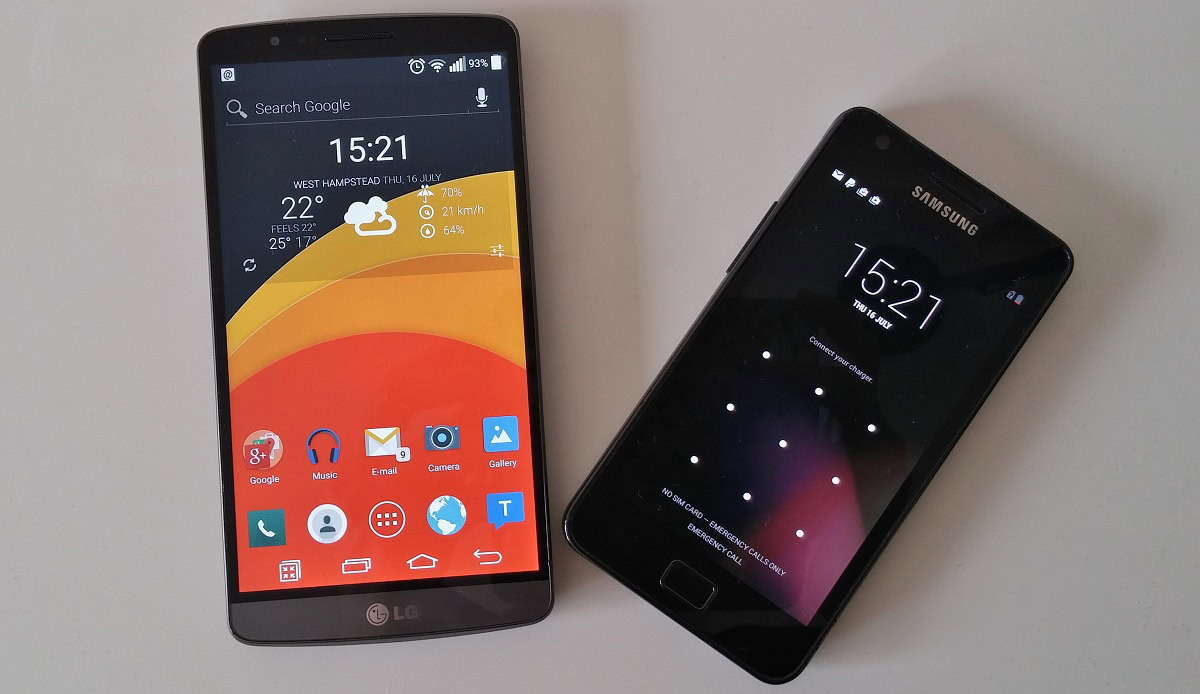
Smartphones are pretty quick these days, offering buttery smooth multi-tasking and packing enough grunt to push out plenty of pixels for high resolution gaming. Sometimes it’s easy to forget that the world of smartphones was quite different not so long ago. So, let’s take a little time to appreciate just how far our little smartphones have come.
We could spend ages talking through every new chip, technological breakthrough and chip design under the sun, but I just can’t bring myself to type out that many model numbers, instead let’s talk performance. Although benchmarks might not be perfect, they’re not a bad guide to theoretical peak performance between devices running the same test. GeekBench is one of the more reliable and has achieves that go back quite a way, so we’ll be pulling some data from there.
Android vs iOS
There’s no better place to start than the old Android vs Apple grudge match, so let’s delve back in time to see who topped the smartphone benchmarks each year. Apple may have been the first on the market all those years ago, but it’s an advantage that Android has been very quick to close in on.
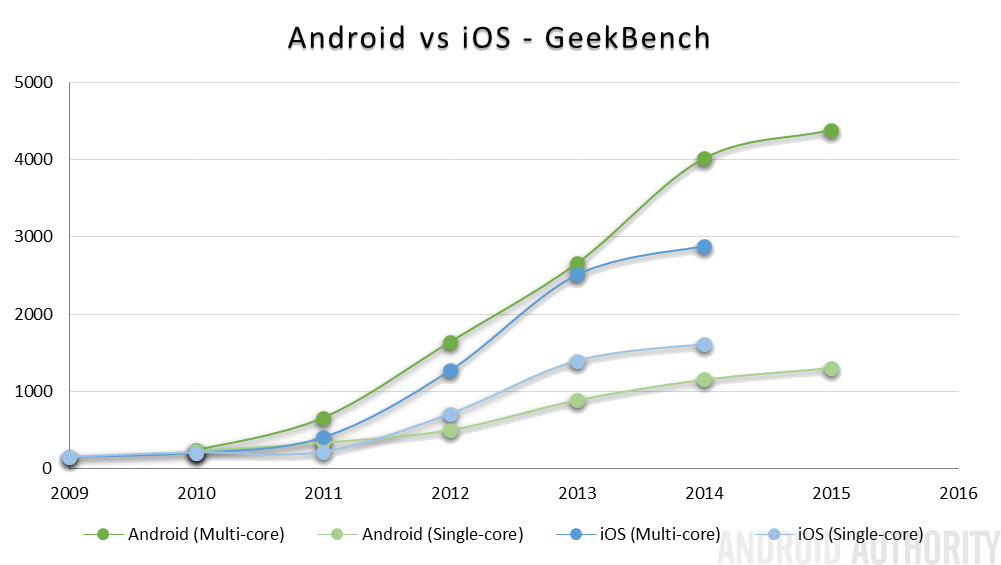
Much as it did back then, Apple still has a heavy input into the design of its smartphone SoCs, while Android mostly relies on big market players to provide chips for a range of products. Perhaps not unexpectedly, it’s been a close run race for several years, but the past couple have seen an interesting trend emerge. Apple’s iPhone range has built a steady lead with single core performance, while the best Android phones have leapt ahead with multi-core performance.
We can directly correlate this large jump in performance to the introduction of big.LITTLE octa-core SoCs, while Apple remains more interested in per core performance. We have previously discussed how Android makes use of multiple cores and this is helping Android see notable performance gains in certain scenarios, as well as aiming to improve battery life in less demanding tasks.
Performance by brand
Android is a big place, so it’s only right to examine the broader competition. For this chart we’re looking at the major flagship releases each year from some of Android’s biggest global brands. It’s tricky to find data on every handset, but should give us a rough idea about where the competition has been.
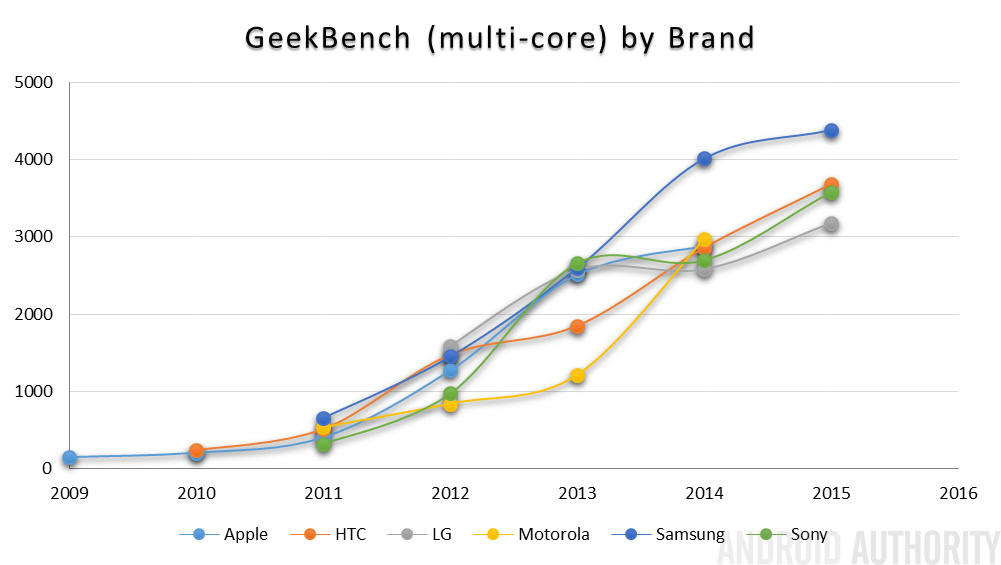
We shouldn’t be surprised to see a close run race between all of the big Android players, as most smartphones have been making use of the same processors in each generation, many of them from Qualcomm. The only real performance differences tend to last a few months, as companies race to be the first to the next milestone.
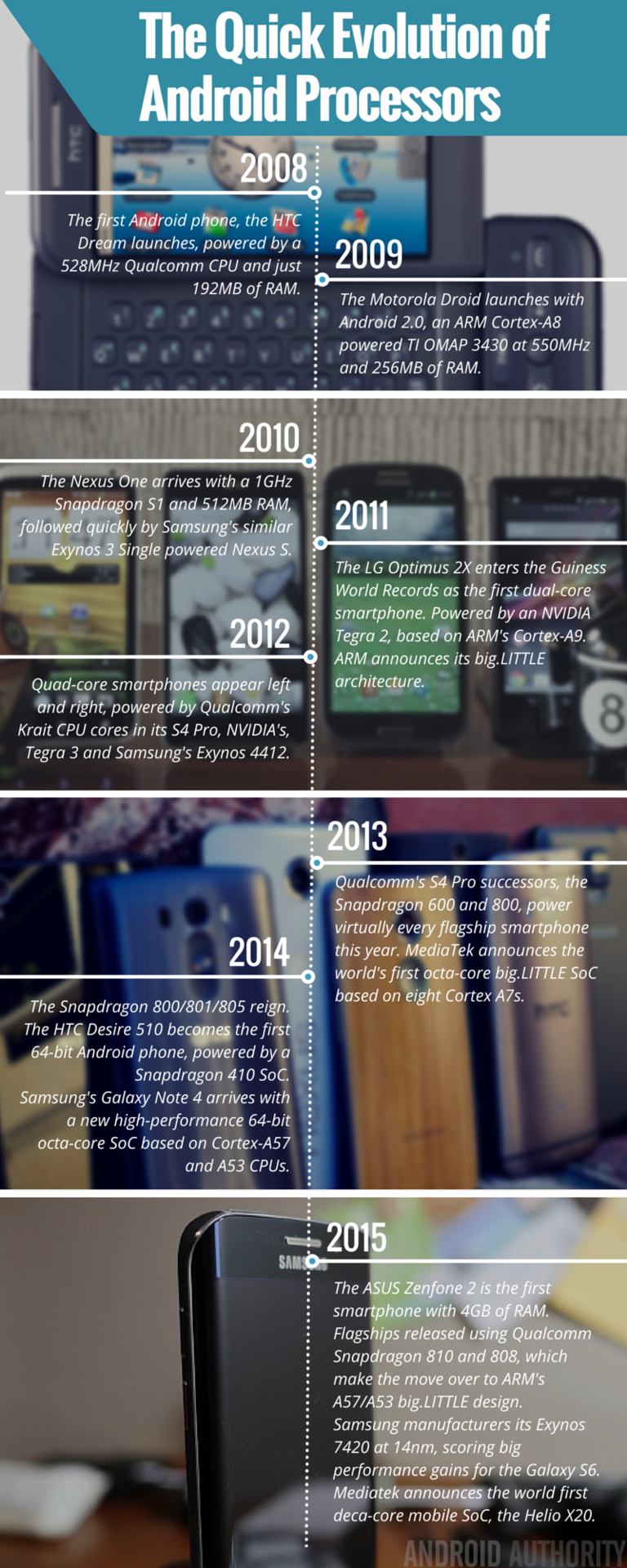
This past few years have been an interesting period in the mobile SoC arms race, as manufacturers leapt from the older Qualcomm S4 designs up to faster, quad-core chips and finally into the octa-core behemoths of today’s handsets, all in the space of just two to three years. Samsung managed to leapfrog the competition with its octa-core big.LITTLE Galaxy Note 4 at the end of 2014 and seems to have maintained a notable advantage this year thanks to its 14nm technology. Other companies have transitioned over to Qualcomm’s own Snapdragon 810 octa-core chip this generation, but is a tad behind on a 20nm manufacturing process.
LG has seen the slowest rate of improvement in the past few years, having been early into the Snapdragon 800 series with the Nexus 5 but then choosing to avoid the more recent 810 in favour of Qualcomm’s hexa-core 808 for its LG G4.
Bang per buck
One of the greatest things about technology is that it gradually become more affordable. You don’t have to pay top dollar for compelling smartphone performance these days, but that has not always been the case. Take a look at this next chart which plots performance against price over the past five years.
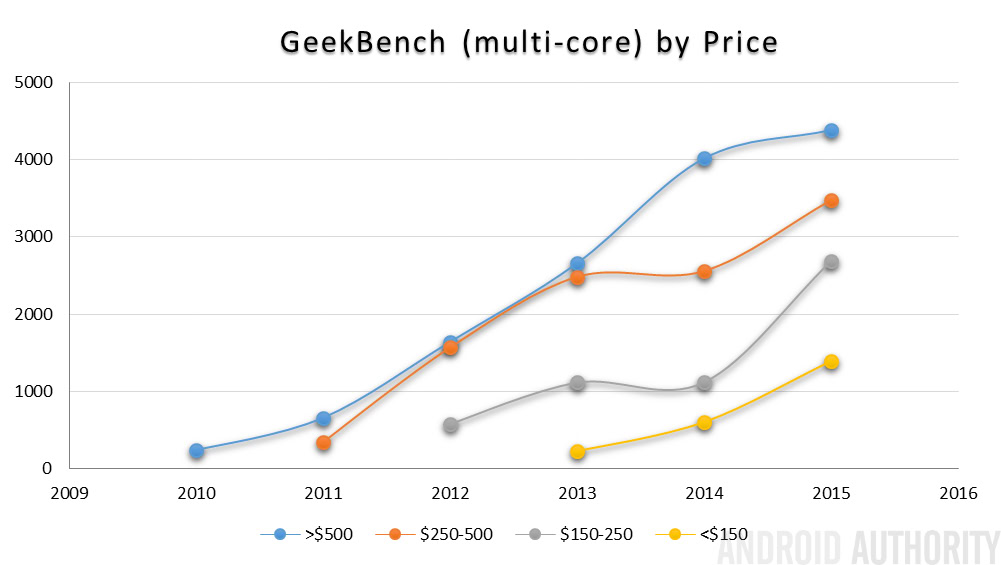
As we would expect, today’s handsets cost half as much as they did a few years ago and offer up equal, if not improved performance.
As an example, the sub $150 Moto E second generation offers up similar performance to yesteryear’s $500+ Galaxy S2, and runs circles around this decade’s early and far more costly Android handsets, such as the HTCNexus One.
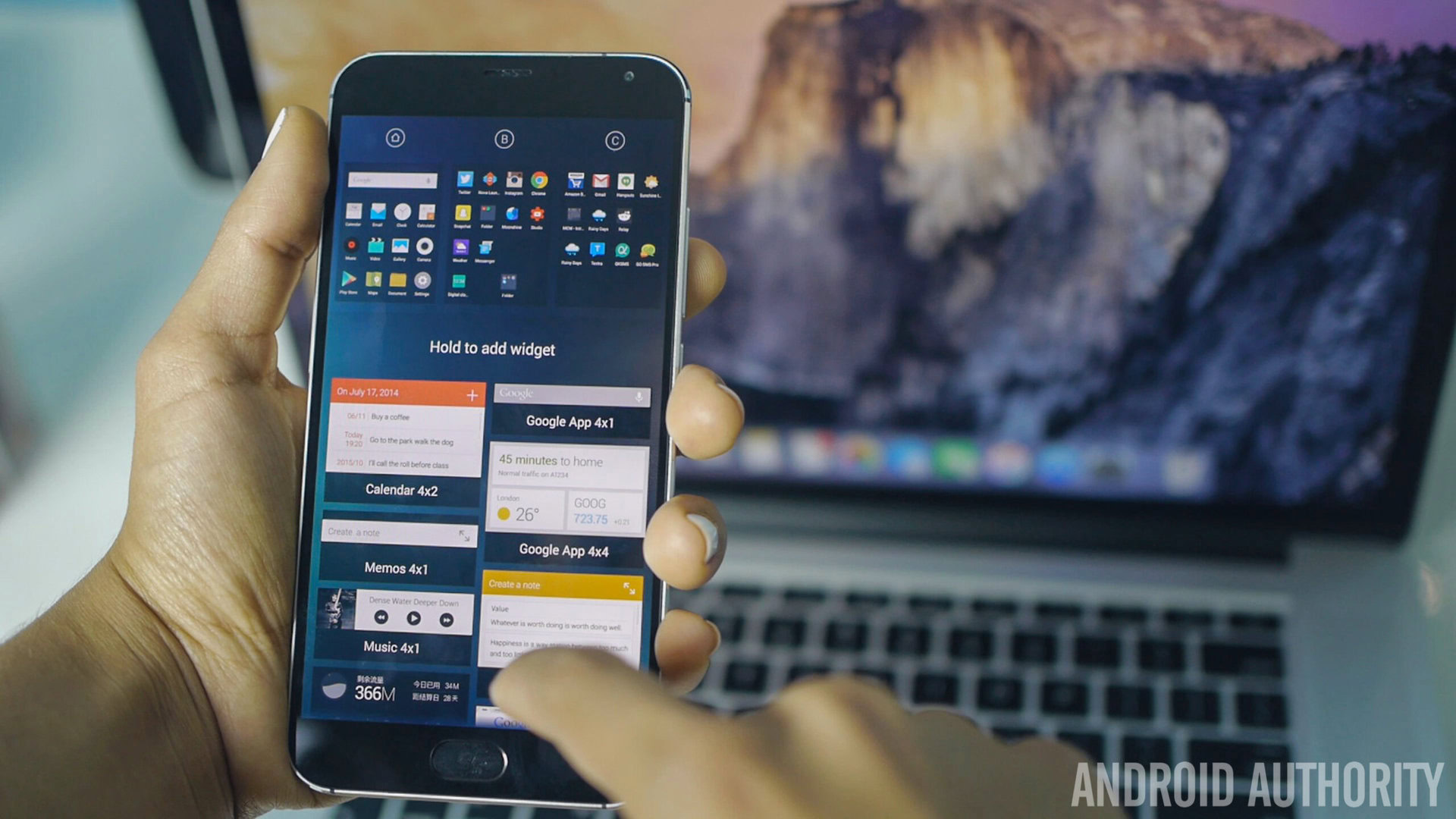
We can also spot an interesting dynamic that has played out between the very premium $500+ market and the mid-range game. 2012 and 2013 saw the gap between the high and low tier markets close thanks to the Nexus 4 and 5. This ended with the introduction of the pricey Nexus 6, but low cost brands from Asia have picked up the baton.
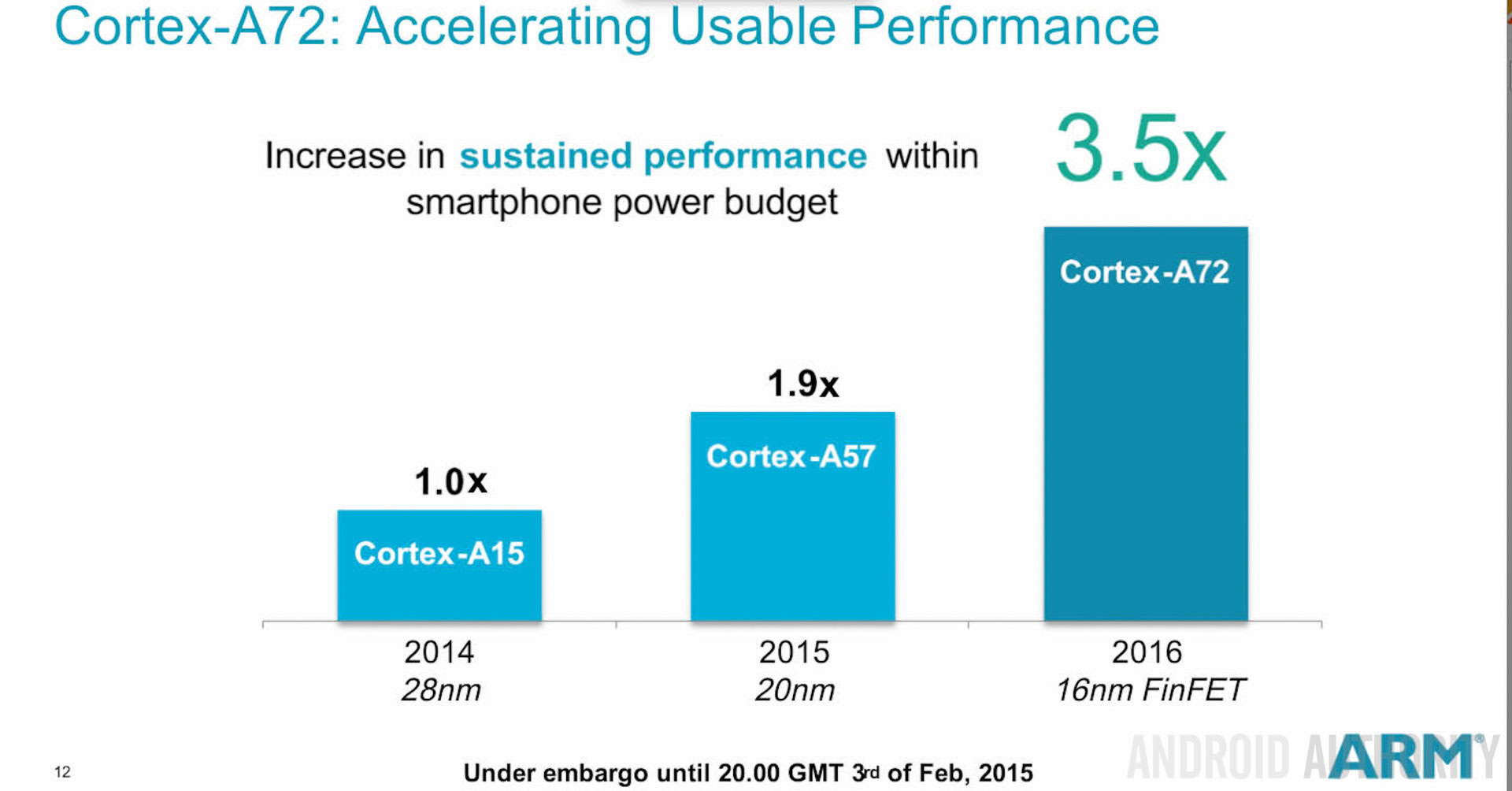
That said, there is now a more notable performance gap between the very high-end phones packing the latest octa-core chips and those which are still relying on older or cheaper SoCs. Samsung, Sony, HTC, and LG have a lead so far this year as first adopters, but this is already changing, as lower cost manufacturers gear up their own next-gen releases, such as the OnePlus 2 and the Moto X Style, which boast flagship performance with sub $400 price tags.
Another interesting trend can be seen when we look at the single-core performance of these same handsets.
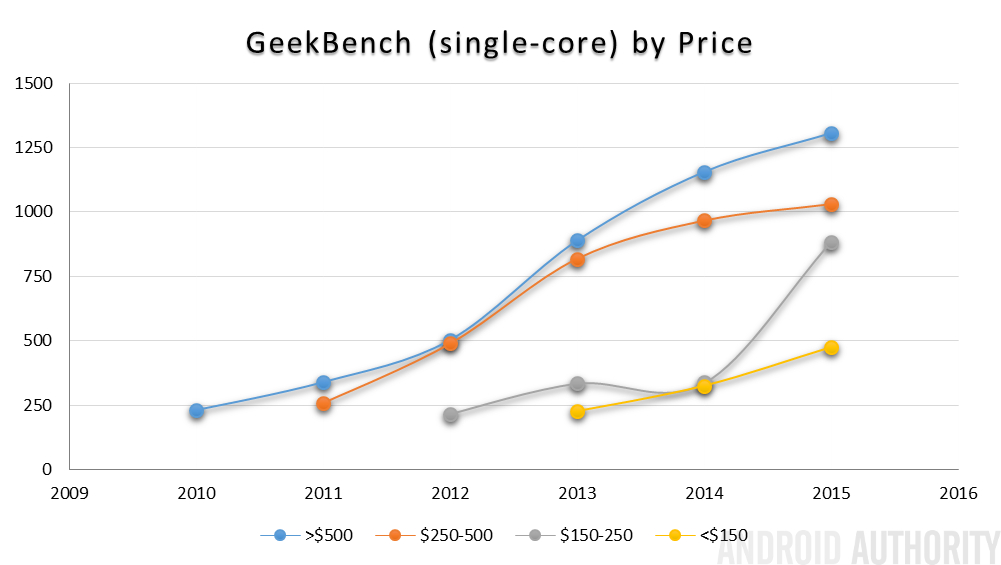
Turning to the sub $250 market, the trend looks quite similar to the premium market of five years ago. Single core performance has been close run between the two tiers, the performance gap has occurred as budget smartphones remained locked on old dual-core setups. However, falling prices in multi-core and more powerful core architectures has seen the $150-$250 price bracket really close the gap with more expensive handsets, thanks to low-cost smartphones like the ZTE Grand S2.
[related_videos title=”High Performance phones on a budget” align=”center” type=”custom” videos=”629181,629693,630317″]
Today we’re left with a more evenly spread range of options for both price and performance than we had even two years ago, let alone five. The hardware that fits in our pocket has come a huge way in less than a decade and it’s going to be exciting to see where we end up.